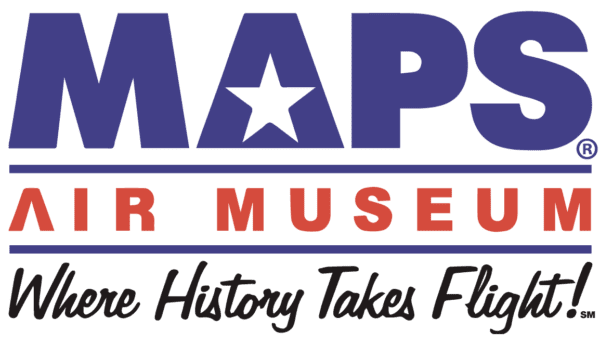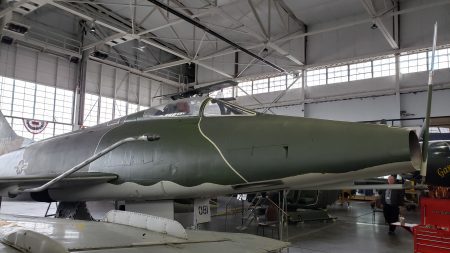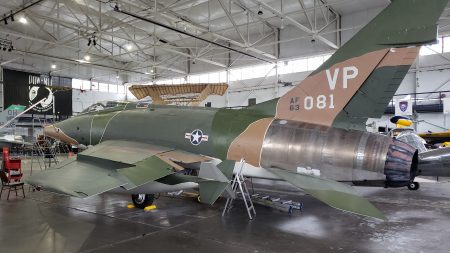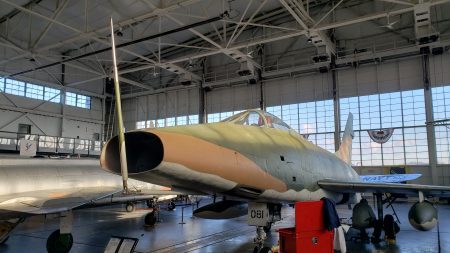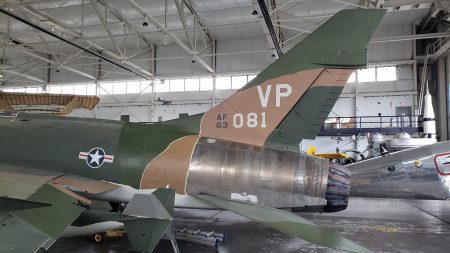Our Aircraft’s History
North American F-100-D-70-NA “Super Sabre” (S/N 56-3081; MSN #235-179) ~ The F-100 was the first of the “Century Series” jet aircraft and the first Air Force fighter capable of supersonic speed in level flight. Later in its life, the F-100 was sometimes called a “Hun”, a shortened version of “one hundred”.
This Super Sabre was built at the North American Aviation facility in Inglewood, California and delivered to the US Air Force on June 19, 1957. She was first assigned to the 312th Fighter-Bomber Wing, Tactical Air Command (TAC) at Cannon Air Force Base (AFB), New Mexico and then immediately deployed to Seymour-Johnson AFB, North Carolina. Here is the history of her travels, including the Vietnam War:
- July 1958 – 312th Fighter-Bomber Wing, TAC, George AFB, California; deployed to Cannon AFB, California and Chiayi Air Base (AB), Taiwan
- February 1959 – 27th Tactical Fighter Wing, TAC, George AFB, California; deployed to Incirlik AB, Turkey and McConnell AFB, Kansas
- March 1965 – 4510th Combat Crew Training Wing, TAC, Luke AFB, Arizona
- April 1967 – 3rd Tactical Fighter Wing, Pacific Air Forces (PACAF), Bien Hoa AB, Vietnam
- October 1969 – 35th Tactical Fighter Wing, PACAF, Phan Rang AB, Vietnam
- June 1970 – 31st Tactical Fighter Group, PACAF, Tuy Hoa AB, Vietnam
- September 1970 – 4403rd Tactical Fighter Wing, TAC, England AB, Louisiana
- April 1972 – 121st Tactical Fighter Group, Ohio Air National Guard (ANG), Lockbourne AFB, Ohio
- October 1974 – 132nd Tactical Fighter Wing, Iowa ANG, Des Moines, Iowa
- September 1976 – 131st Tactical Fighter Wing, Missouri ANG, Lambert Field, Missouri
- November 1978 – Transferred to Aerospace Maintenance and Regeneration Center (AMARC), Davis-Monthan AFB, Arizona
- June 1988 – Converted to QF-100D Target Drone
- June 1998 – Transferred to Florida Air Museum, St. Petersburg, Florida by the US Air Force Museum
In November of 2004, she was recovered from Florida and transferred to the MAPS Air Museum for restoration. After over 5500+ volunteer hours and 7 years of time, the Super Sabre’s primary restoration was complete in June of 2012. Crew Chief Ken Ramsay and his crew have been maintaining the Vietnam War era aircraft.
Specifications/Performance (F-100D)
- Role: Bomber/fighter
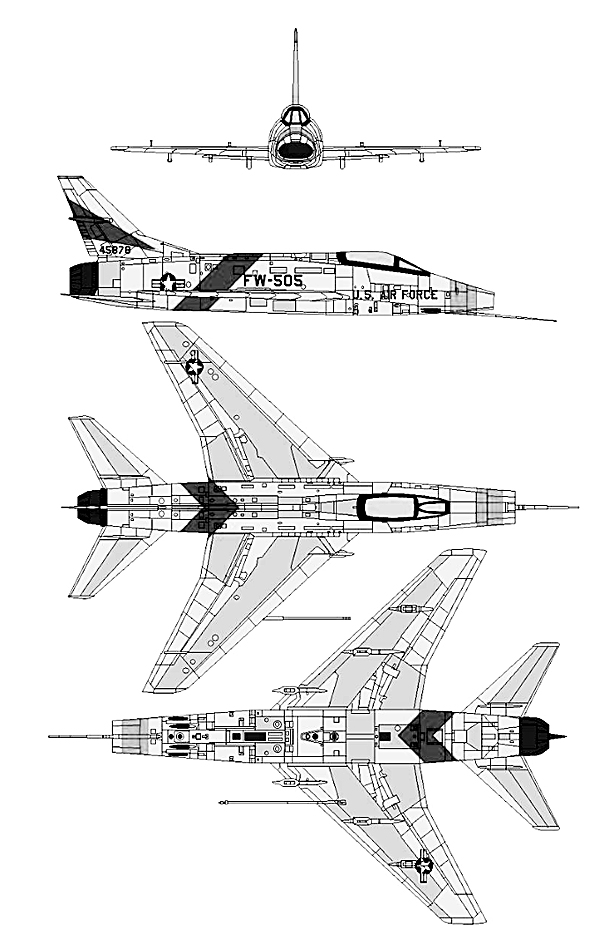
- Manufacturer: North American Aviation
- First flight: May 25, 1953
- Introduction: September 27, 1954
- Retired: 1979 (US ANG)
- Produced: 1953-1959
- Built: 2,294
- Unit cost: $697,029 (1954)
- Crew: 1
- Length: 50 ft
- Wingspan: 38 ft 9 in
- Height: 16 ft 2 3/4 in
- Empty weight: 21,000 lb
- Max takeoff weight: 34,832 lb
- Engine: 1 x Pratt & Whitney J57-P-21/21A turbojet, 10,200 lbf (w/afterburner 16,000)
- Max speed: 864 mph
- Range: 1,995 mi
- Service ceiling: 50,000 ft
Armament, notable
- Guns: 4 x 20mm Pontiac M39A1 revolver cannon (200 rounds each)
- 4 x AIM-9 Sidewinder or
- 2 x AGM-12 Bullpup or
- 2 x or 4 x LAU-3/A 2.75″ unguided rocket dispenser
- Up to 7,040 lb of weapons, including conventional bombs or the Mark 7, Mk 28, Mk 28 or Mk 43 nuclear bomb
Museum display notes: Our “Hun” is being repainted a 2nd time to re-energize the camouflage markings, however, there will be no change to its current markings from when it was assigned to the 35th Tactical Fighter Wing (PACAF) at Phan Rang AB, Vietnam in 1969.
Designed to replace: Unsolicited upgrade to the F-86 “Sabre”
Replaced by: LTV A-7 “Corsair II”

